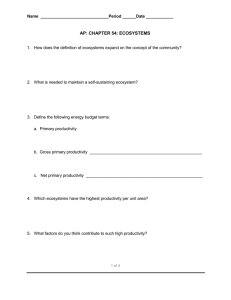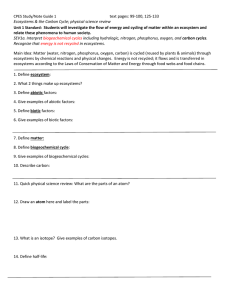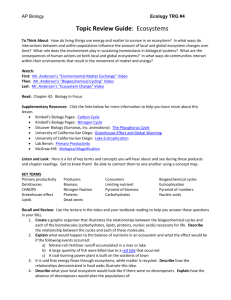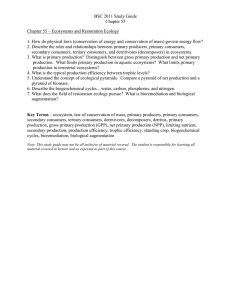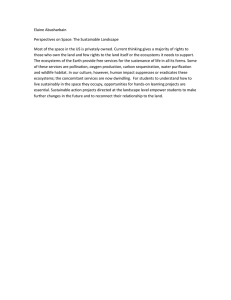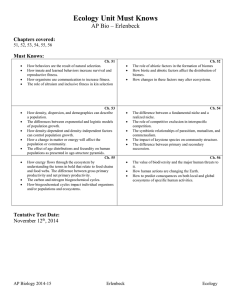APES Learning Targets 4
advertisement
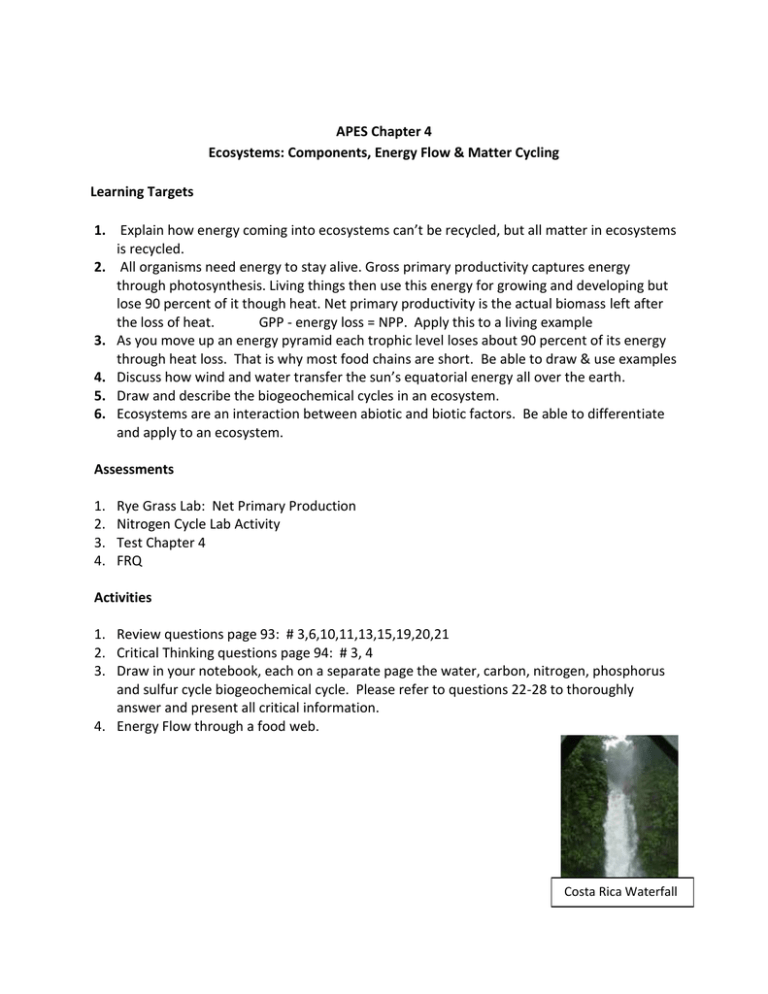
APES Chapter 4 Ecosystems: Components, Energy Flow & Matter Cycling Learning Targets 1. Explain how energy coming into ecosystems can’t be recycled, but all matter in ecosystems is recycled. 2. All organisms need energy to stay alive. Gross primary productivity captures energy through photosynthesis. Living things then use this energy for growing and developing but lose 90 percent of it though heat. Net primary productivity is the actual biomass left after the loss of heat. GPP - energy loss = NPP. Apply this to a living example 3. As you move up an energy pyramid each trophic level loses about 90 percent of its energy through heat loss. That is why most food chains are short. Be able to draw & use examples 4. Discuss how wind and water transfer the sun’s equatorial energy all over the earth. 5. Draw and describe the biogeochemical cycles in an ecosystem. 6. Ecosystems are an interaction between abiotic and biotic factors. Be able to differentiate and apply to an ecosystem. Assessments 1. 2. 3. 4. Rye Grass Lab: Net Primary Production Nitrogen Cycle Lab Activity Test Chapter 4 FRQ Activities 1. Review questions page 93: # 3,6,10,11,13,15,19,20,21 2. Critical Thinking questions page 94: # 3, 4 3. Draw in your notebook, each on a separate page the water, carbon, nitrogen, phosphorus and sulfur cycle biogeochemical cycle. Please refer to questions 22-28 to thoroughly answer and present all critical information. 4. Energy Flow through a food web. Costa Rica Waterfall
